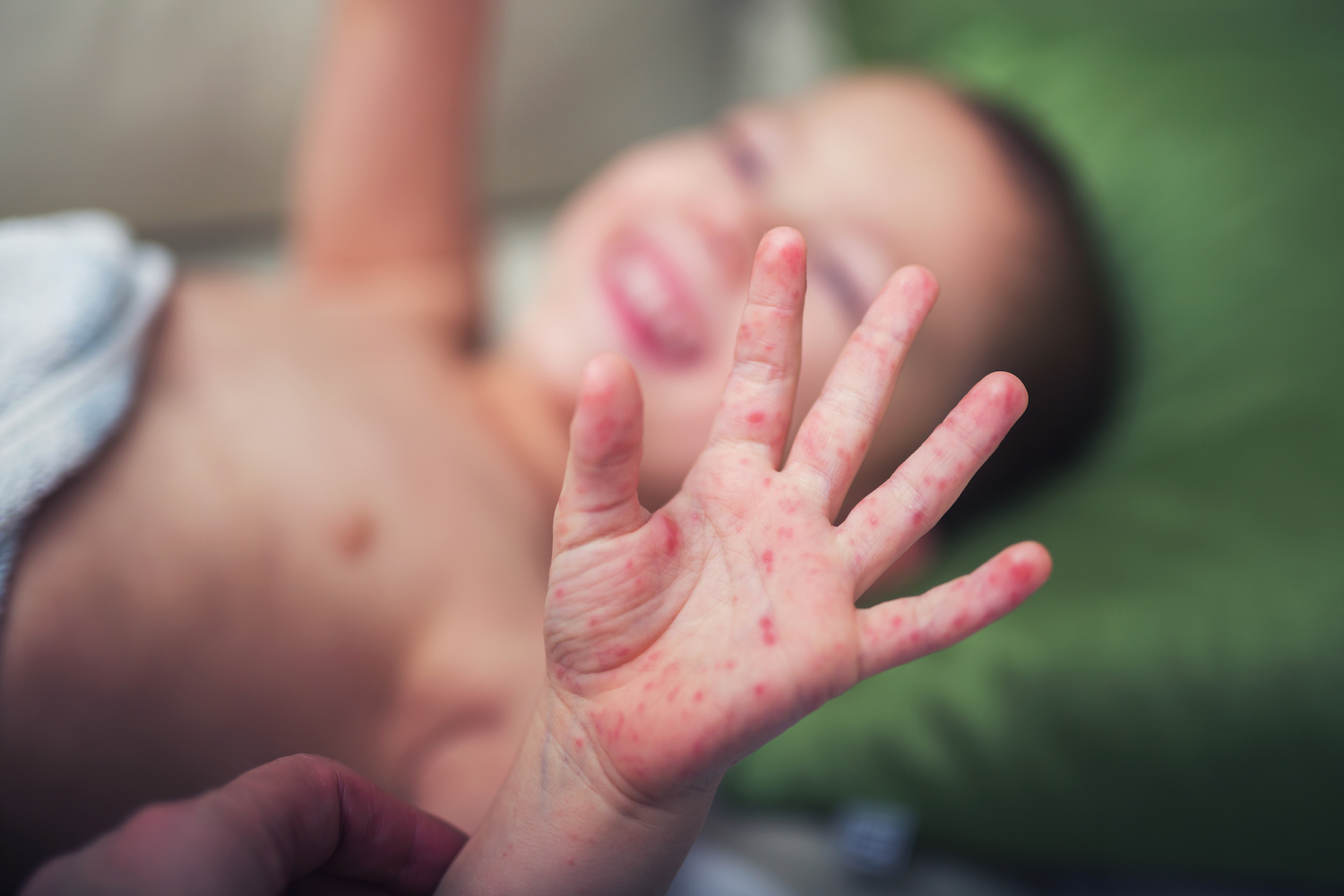Overview of Hand, Foot, and Mouth Disease
Hand foot and mouth disease – Hand, foot, and mouth disease (HFMD) is a common childhood illness caused by a virus. It is characterized by fever, sore throat, and a rash on the hands, feet, and mouth. HFMD is highly contagious and can spread easily through contact with an infected person’s saliva, mucus, or feces.
Hand, foot, and mouth disease, a common childhood illness, is caused by a virus that can also lead to respiratory problems. It’s important to be aware of the symptoms, including fever, sore throat, and a rash on the hands, feet, and mouth.
While there is no specific cure, treatment focuses on relieving symptoms. In other news, Davante Adams , the star wide receiver for the Las Vegas Raiders, is reportedly dealing with a shoulder injury. The severity of the injury is unknown, but it could potentially impact his availability for upcoming games.
As for hand, foot, and mouth disease, prevention is key. Frequent handwashing and avoiding contact with infected individuals can help reduce the risk of transmission.
Symptoms
- Fever
- Sore throat
- Rash on the hands, feet, and mouth
- Loss of appetite
- Fatigue
- Nausea and vomiting
- Headache
Causes
HFMD is caused by a virus, most commonly the coxsackievirus A16. Other viruses that can cause HFMD include coxsackievirus A4, A5, A6, A7, A9, A10, and B2, as well as enterovirus 71 (EV71).
Transmission, Hand foot and mouth disease
HFMD is spread through contact with an infected person’s saliva, mucus, or feces. The virus can be spread through coughing, sneezing, or sharing food or drinks with an infected person. It can also be spread through contact with contaminated surfaces or objects.
Prevalence and Impact
HFMD is a common childhood illness. It is estimated that 10-15 million cases of HFMD occur worldwide each year. The disease is most common in children under the age of 5, but it can also occur in older children and adults.
Strains
There are several different strains of HFMD virus. The most common strain is coxsackievirus A16. Other strains include coxsackievirus A4, A5, A6, A7, A9, A10, and B2, as well as enterovirus 71 (EV71). Different strains of the virus can cause varying degrees of severity of illness.
Hand, foot, and mouth disease is a common viral infection that primarily affects young children. It is characterized by fever, sore throat, and a rash on the hands, feet, and mouth. While the disease is usually mild, it can be more severe in some cases.
For instance, in 2024, Josh McDaniels , the head coach of the Las Vegas Raiders, missed a game due to the illness. This highlights the potential impact of hand, foot, and mouth disease, even on adults.
Prevention and Treatment of Hand, Foot, and Mouth Disease
:max_bytes(150000):strip_icc()/GettyImages-14372670171-66c5b5bbfe70418a9a8f8149b0f11bca.jpg)
Prevention is crucial in combating the spread of Hand, Foot, and Mouth Disease (HFMD). Meticulous hand hygiene, regular disinfection of surfaces, and isolation of infected individuals are paramount. Vaccination, though not universally available, offers a promising preventive measure.
Treatment options for HFMD are limited, primarily focusing on symptom management. Over-the-counter pain relievers can alleviate discomfort, while cool baths or compresses provide soothing relief for mouth sores. Maintaining adequate hydration is essential to prevent dehydration.
Guidelines for Managing Symptoms and Preventing Complications
- Encourage frequent hand washing with soap and water, especially after using the toilet, changing diapers, and before eating.
- Disinfect surfaces that may have been contaminated, such as toys, doorknobs, and countertops.
- Isolate infected individuals to prevent the spread of the virus.
- Administer over-the-counter pain relievers, such as ibuprofen or acetaminophen, to reduce fever and discomfort.
- Soothe mouth sores with cool baths or compresses.
- Ensure adequate hydration by offering plenty of fluids, such as water, juice, or electrolyte solutions.
Public Health Response to Hand, Foot, and Mouth Disease: Hand Foot And Mouth Disease

Public health agencies play a critical role in the surveillance, outbreak management, and control of hand, foot, and mouth disease (HFMD). These agencies monitor disease trends, investigate outbreaks, and implement control measures to prevent the spread of HFMD.
Vaccination
Vaccination is an effective way to prevent HFMD and reduce its impact. The HFMD vaccine is safe and effective in preventing infection and reducing the severity of symptoms. Vaccination is recommended for children aged 6 months to 5 years, who are at highest risk of developing HFMD.
Best Practices for Healthcare Professionals
Healthcare professionals play a vital role in diagnosing and treating HFMD. Best practices for healthcare professionals include:
* Recognizing the symptoms of HFMD and providing prompt diagnosis
* Providing supportive care to relieve symptoms
* Preventing the spread of infection through proper hand hygiene and disinfection
* Educating patients and families about HFMD and its prevention